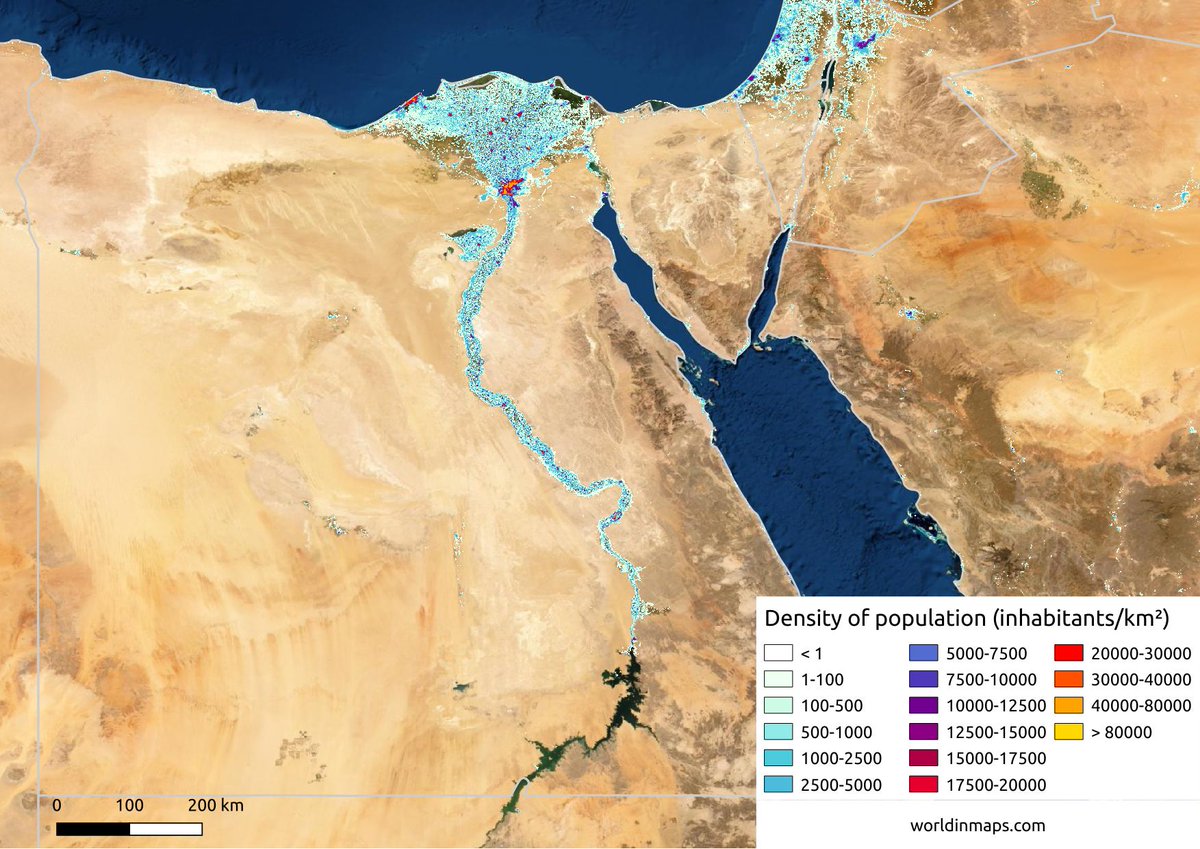Instability to Insecurity? Egypt's Diminishing Influence over the Nile's Waters
Instability to Insecurity? Egypt's Diminishing Influence over the Nile's Waters
It has come to talk about Egypt: arguably the country that has shaped Nile hydropolitics the most, but at the same time, the country that itself has been shaped most by the Nile. It only takes a population density image, as the one in Figure 1, to indicate how the Nile is the cradle and lifeline of Egyptian civilisation. Egypt was formally the most politically stable riparian country with the strongest economy, which upheld its hegemony by having a greater stronghold in negotiations, but political crisis and social unrest widely transformed this. In our analysis, it is fundamental to assess the reduction in Egyptian influence over the Nile's waters between external factors (e.g., Ethiopian hegemony, more equitable sharing of water resources) against internal factors (instability in Egypt).

(above) Source
Point 1: Historical connotations of the Nile Water in Egypt
The existence of Egypt from its ancient civilisation to its contemporary state can be attributed as a 'gift of the Nile' (Kendie 1999), with its geographic position allowing Egypt to be advantageous to hold priority in water allocations. Though, this is on the basis of greater dependence of the Nile's waters, arguably meaning the Nile has dominated over Egypt, rather than vice versa (Brunnee and Toope 2002). It is the two major agreements of the early-mid 20th century that pre-determined Egypt's hydro-hegemony and domination in negotiations: supported by the British Empire, the 1929 agreement forbode any riparian countries under British administration to utilise the Nile's waters, while the 1959 agreement was only to incorporate Sudan in the exclusivity, failing to account the upstream riparians, particularly Ethiopia (Mielnik 2021; Mekonnen 2010).
However, internal instabilities have provoked a shift in hegemonic power. The Egyptian Revolution as a part of the wider Arab Spring in 2011 put Egypt into a state of social and political instability, generally reducing Egypt's strength in negotiations, as well as a more opaque regional strategy. The combination of internal turmoil with upstream countries contesting the validity of the colonial-era agreements of 1929/1959 meaning Egypt lost a greater share of its water resources has been crushing for Egypt's hydro-hegemony. Particularly in contrast against Ethiopia and Zenawi's ministership steering the nation into a position of stability, it can be said that the post-revolution years, where Egyptian leadership was sporadically changing in the midst of social unrest, has created an unstable scenario inhibiting effective water management. The case of Ethiopian prosperity and Egyptian stagnation highlights the intrinsic link between political stability and hydropower.
Into the next blog post, we will bring in a new player in the contestation of hydro-hegemony: Sudan. We have seen that Sudanese hydropower has often been aligned with Egypt's, for instance through the 1929 agreement, as well as ancient Sudanese societies being aligned with the pre-determined right to the Nile's waters.
Comments
Post a Comment